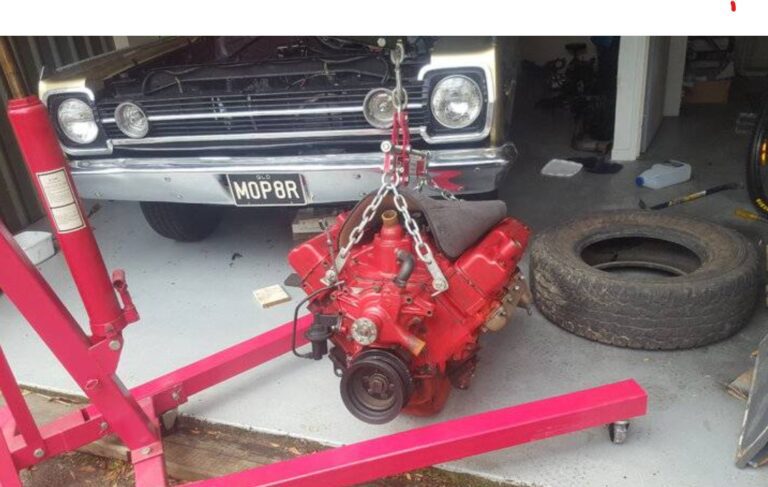How To Clear Engine Derate Volvo? 7 Easy Steps
Do you want to know How To Clear Engine Derate Volvo? This is a crucial question for Volvo vehicle owners. Engine derate, a safety mechanism in modern vehicles, particularly in Volvo, reduces the engine’s power output to prevent damage. This mechanism kicks in due to various issues like overheating, sensor malfunctions, or exhaust system problems. Understanding and resolving these issues promptly is essential for the smooth operation of your Volvo vehicle.
Key Takeaways
- Understand the basics of engine derate in Volvo vehicles.
- Learn the step-by-step process to clear engine derate.
- Explore preventive measures and maintenance tips.
- Gain insights into common troubleshooting techniques.
How To Clear Engine Derate Volvo?
Clearing an engine derate in a Volvo involves a systematic process to diagnose and address the underlying issue causing the derate, followed by resetting the engine control unit (ECU) to clear the derate condition. Here are the detailed steps:

- Diagnosis with a Diagnostic Tool:
- Start by using a diagnostic scanner, like an OBD-II scanner, which is compatible with your Volvo vehicle.
- Connect the scanner to the vehicle’s diagnostic port, usually located under the dashboard.
- The scanner will read the engine’s computer (ECU) for any fault codes. These codes help identify the specific issue causing the engine derate, such as problems with the DPF (Diesel Particulate Filter), EGR (Exhaust Gas Recirculation) system, sensors, or other engine components.
- Interpreting Fault Codes:
- Each fault code provides insight into a specific issue. For instance, codes related to the DPF may indicate clogging, while others might point to a faulty sensor.
- Consult the Volvo’s service manual or online resources for a detailed explanation of each code.
- Addressing the Identified Issue:
- Based on the fault codes, proceed to fix the issue. This may involve several actions:
- Replacing Faulty Sensors or Components: If the derate is due to a faulty sensor (like an oxygen sensor or a temperature sensor), replace the sensor.
- DPF Issues: If the derate is related to the DPF, it might require cleaning or in severe cases, replacement.
- Correcting Fluid Levels: Ensure all fluids (oil, coolant, etc.) are at the correct levels and refill or replace them if needed.
- Repairing Mechanical Issues: Address any mechanical issues identified during the diagnosis.
- Based on the fault codes, proceed to fix the issue. This may involve several actions:
- Clearing the Fault Codes and Resetting the ECU:
- After resolving the issue, use the OBD-II scanner to clear any stored fault codes.
- This step often involves resetting the ECU, which can be done through the scanner. This reset tells the engine’s computer that the issue has been fixed and the derate can be cleared.
- Test Drive:
- After clearing the derate, perform a test drive to ensure that the issue is completely resolved.
- Monitor the vehicle’s performance closely during the test drive. Pay attention to the engine’s power output, any warning lights, and overall vehicle behavior.
- Professional Inspection (if needed):
- If you’re not confident in diagnosing or fixing the issue yourself, or if the problem persists after you attempt to fix it, it’s important to take your Volvo to a certified mechanic or a Volvo dealership for a professional inspection and repair.
- Regular Maintenance:
- To prevent future occurrences of engine derate, adhere to regular maintenance schedules as recommended by Volvo. This includes timely oil changes, checking and maintaining fluid levels, and regular checks of the exhaust and emission systems.
Remember, dealing with engine derates can sometimes be complex, especially in modern vehicles with sophisticated engine management systems. Seeking professional assistance is often the safest and most effective approach.
Addressing the Issue
- Resolve mechanical or electrical problems as indicated by the diagnostics.
- Replace faulty sensors or components.
- Ensure proper fluid levels and quality.
Resetting the ECU
- Clear the error codes using the OBD-II scanner.
- Perform a test drive to ensure the issue is resolved.
Understanding Engine Derate in Volvo
Engine derate in Volvo vehicles occurs when the engine control unit (ECU) detects a malfunction or potential risk to the engine. This safety measure ensures the longevity of the engine by reducing its power, thus safeguarding it from further damage.
Causes of Engine Derate
- Overheating of the engine.
- Faulty sensors or electrical components.
- Issues in the exhaust after-treatment system.
- Insufficient engine oil or other fluids.
Impact on Vehicle Performance
- Reduced engine power and acceleration.
- Potential increase in fuel consumption.
- Limited functionality of certain vehicle features.
How to Diagnose Engine Derate in Volvo?
Diagnosing engine derate involves understanding the warning signs and using diagnostic tools. It’s important to address these issues promptly to prevent further damage to your Volvo.

Warning Signs
- Check engine light activation.
- Noticeable decrease in engine power.
- Unusual noises or vibrations from the engine.
Diagnostic Tools and Techniques
- Utilize an OBD-II scanner to read error codes.
- Inspect visually for any visible issues.
- Check fluid levels and sensor functionality.
Preventive Measures and Maintenance Tips
Regular maintenance and preventive measures can significantly reduce the likelihood of engine derate situations.
Regular Maintenance
- Regular oil and fluid changes.
- Routine checks of the exhaust and emission systems.
- Timely replacement of worn-out sensors and parts.
Preventive Strategies
- Monitor vehicle performance and address any irregularities promptly.
- Use quality parts and fluids recommended by Volvo.
- Adhere to Volvo’s service schedules and guidelines.
Common Troubleshooting Techniques
Effective troubleshooting can save time and prevent misdiagnosis. Familiarize yourself with common issues and solutions.
Sensor Issues
- Check and replace faulty sensors.
- Ensure proper electrical connections.
Exhaust System Problems
- Inspect the exhaust for clogs or damage.
- Check the after-treatment system components.
What Does It Mean When A DPF Engine Is Derated?
When a Diesel Particulate Filter (DPF) engine is derated, it means the engine’s power output is intentionally reduced by the vehicle’s computer, known as the Engine Control Unit (ECU).

This action typically occurs as a response to issues related to the DPF system, which is designed to capture and store exhaust soot to reduce emissions from diesel engines.
Common triggers for DPF engine derate include clogged DPF, malfunctioning sensors, or issues with the exhaust gas recirculation (EGR) system. When the system detects these problems, it initiates a derate to protect the engine from potential damage due to excessive exhaust back pressure or overheating.
What Is The Meaning Of Derated Engine?
A derated engine refers to a condition where the engine’s power and performance are intentionally reduced by its control system. This happens when the ECU detects an issue that could potentially harm the engine, such as overheating, excessive emission levels, or component malfunctions.
Derating helps to prevent further damage to the engine and other critical parts of the vehicle by limiting its performance until the issue is resolved. This is a common feature in modern vehicles, especially those with complex emission control systems like those found in Volvo trucks.
How To Clear Engine Derate On A Volvo VN / VNL?
Clearing an engine derate on a Volvo VN / VNL involves several steps. First, diagnose the issue using a diagnostic tool like an OBD-II scanner to identify any fault codes.
These codes will indicate what is causing the derate, such as DPF clogging, sensor failures, or EGR system issues. Once the root cause is identified, address it by replacing faulty parts, cleaning the DPF, or refilling necessary fluids. After repairing or resolving the issue, reset the ECU to clear the derate condition.

This can be done using the diagnostic tool or sometimes by a specific series of actions, like a key-on/key-off procedure, as per Volvo’s guidelines. It is recommended to seek professional assistance for accurate diagnostics and repair.
What To Do If Your Volvo D13 Is Stuck In 5 MPH Derate?
If your Volvo D13 engine is stuck in a 5 MPH derate, this is a critical condition indicating a severe issue with the engine or its emission control system. Firstly, check for any active fault codes using a diagnostic scanner.
Common causes for this severe derate include major DPF blockages, critical sensor failures, or extreme cases of engine malfunction.
Addressing the specific cause is paramount. For example, if it’s a DPF issue, a professional DPF cleaning or replacement might be necessary. If it’s a sensor or other mechanical issue, replace the faulty components.
Once the issue is resolved, the ECU needs to be reset to clear the derate condition. In such severe cases, it is highly recommended to have the truck inspected and repaired by a qualified Volvo technician, as driving in this derate mode can lead to safety risks and further engine damage.
Conclusion
In conclusion, understanding How To Clear Engine Derate Volvo is vital for maintaining your vehicle’s health and performance. Regular maintenance, prompt issue resolution, and adherence to Volvo’s guidelines will ensure your engine runs smoothly and efficiently.
Remember, addressing engine derate issues is not just about clearing an error; it’s about safeguarding the heart of your Volvo.
People Also Ask
How does an OBD-II scanner help in resolving engine derate issues?
An OBD-II scanner helps by interfacing with the vehicle’s ECU to retrieve diagnostic trouble codes (DTCs). These codes provide insights into what might be wrong with the vehicle, guiding the troubleshooting and repair process.
Can using aftermarket parts lead to engine derate issues in Volvo?
Yes, using low-quality aftermarket parts can sometimes trigger engine derate issues. Volvo vehicles are designed to work with specific parts and specifications, so using non-genuine or incompatible parts can lead to malfunctions and subsequent derate.
What should I do if the engine derate warning persists after troubleshooting?
If the engine derate warning persists after you’ve attempted troubleshooting, it’s important to consult a professional mechanic or a Volvo dealership. Persistent warnings might indicate a more complex issue that requires expert diagnosis and repair.
Is it possible to prevent engine derate in my Volvo?
Preventing engine derate primarily involves regular maintenance, such as timely oil changes, checking fluid levels, and inspecting the exhaust and emission systems. Being proactive about vehicle care and addressing any minor issues promptly can help avoid derate situations.

Welcome to the exhilarating world of Matt Rex, a professional car racer turned renowned vehicle enthusiast. Immerse yourself in his captivating blog as he shares heart-pounding adventures, expert reviews, and valuable insights on cars, trucks, jets, and more. Fuel your passion for speed and discover the beauty of vehicles through Matt’s engaging stories and meticulous expertise. Join the ever-growing community of enthusiasts who find inspiration and expert advice in Matt Rex’s blog—a digital hub where the thrill of speed meets the pursuit of knowledge.







